Natural hair and wood brushes or “fude” for Japanese calligraphy.
Konnichiwa!
It’s a new spring season. I am in my workshop. This time two years ago, I was in Spain walking a long pilgrimage on the Camino de Santiago. Likewise, this time last year I began another walking pilgrimage around the island of Shikoku in Japan. I wrote about both on the blog to document my journeys so far away from home.
Connections
Sakura or cherry blossom season is happening right at this moment in Japan. There, ten’s of thousands of cherry trees bud, then bloom in an almost orderly manner. The first trees began blooming in the south on Okinawa island in February. From there the blooming continues like a wave northward throughout the country until it reaches Hokkaido in early May.
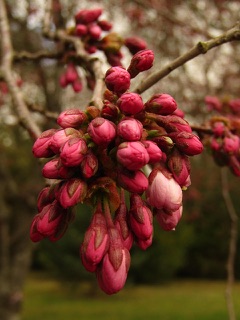
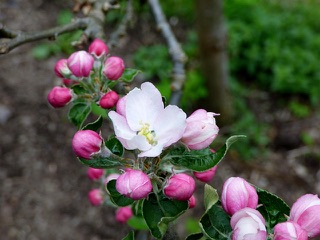
Each blooming, however, lasts about ten days.
As Japan’s national flower, sakura is celebrated for its symbolism. The blooms’ brief appearance is a metaphor for the fleeting nature of life. They’re also a reminder to cherish the present moment.
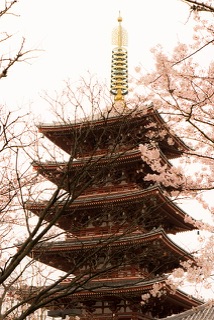
The trees are revered in Japan. Predicting blooming is more art than science. It can happen early or late depending on climatic and other factors.
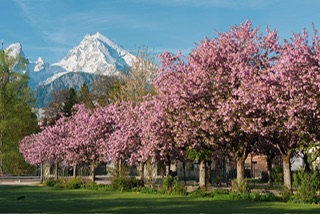
When blooming begins millions of people gather under the trees in tradition of flower viewing called hanami. There are festivals, picnics, family meetings, celebrations, commemorations, and offerings. Also foods and drinks derived from sakura are enjoyed including teas, coffees, and sweets.
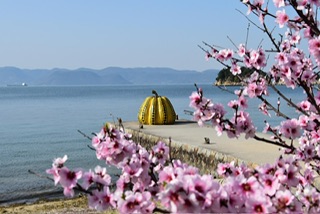
Beautiful pink flowers fall to the ground and cover the grass, roads, and walking paths. It is a fascinating and wondrous thing to behold. Last year, I arrived in Japan for my pilgrimage at the tail end of the blooming season. The cherry trees bloomed a little early for me to get the full effect.
Here at home, 200 cherry trees are opening near my town! I will be attending a hanami or cherry blossom festival at Jackson Park in Chicago next week. According to the Park District, this is the first time in two years that the trees, planted in 2013 in commemoration of the 120th anniversary of the 1893 World’s Columbian Exposition, are in full bloom.
Due to favorable weather and temperatures this year, the blooms are finally blooming! I missed the blossoms in Japan and I missed the blooms here over the last two years.
But I won’t miss them this time.
Shodo
The ancient art of Shodo, Japanese calligraphy, defines the culture. I walked all over Japan without knowing the language. It made getting around there difficult at times. It was exciting too, figuring (with help) signs, schedules, and other communications. I lived to tell the tale but I am intrigued with the writing. It is an art style, beautiful and practical. And it has a vibrant history that follows the history of the country itself.
The Japanese writing system is composed of three character types: Hiragana, Katakana, and Kanji. Hiragana is used for native Japanese function words. Katakana is used for borrowed words from other languages. Kanji are Chinese origin characters that have been adapted to the Japanese language. Overall, there are more than fifty thousand characters. Just over 100 characters are Hiragana and Katakana. The rest are Kanji. The average Japanese speaker learns about three thousand characters.
How can a practitioner like me learn them? It will take writing frequently. After some time, I will be able to remember and recall them more easily. Another thing about learning the characters: Kanji and Hiragana have multiple readings (nuanced meanings). It is important to know all of them in order to read and write effectively.
By practicing shodo, I will reinforce my understanding of important concepts regarding Japanese life and culture. The calligraphy characters are the language in art form. So, I will be learning Japanese, writing, and practicing art all at the same time! You will see some of the results of my calligraphy practice here from time to time.
That practice will take diligence and the rest of my life.
Four Treasures
Shodo requires the proper tools (also known as the four treasures) and an environment that inspires beautiful form and meaningful calligraphy. The four treasures of calligraphy are brushes (fude), ink (sumi), ink stone (suzuri), and paper.
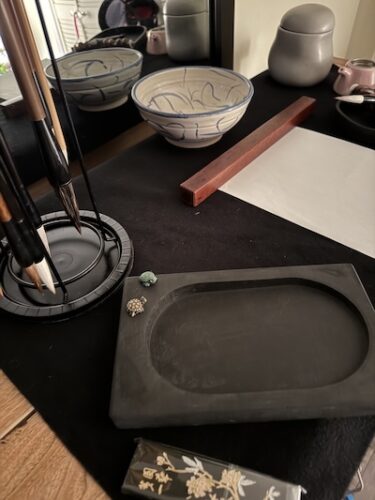
Also, a paperweight (bunchin) and undercloth (shitajiki) are essential.
One more treasure
My added “treasure” is to design and make a writing table to set the tone for my calligraphy practice.
I will reveal more of my plans for this special piece of furniture in blog posts to come.
Next time, I will share the highlights of my trip to view the sakura or blooming cherry trees here at home!
See you then.
Baadaye and Mata ne
Shirley J 🌸
Notes:
Cherry tree source images from Pixabay
1-Sakura buds, image by Sr. M. Jutt; 2-Sakura buds and blooms; image by Yvonne Huijbens; 3-Cherry blossoms at Buddhist temple, image by four_symbols; 4-Cherry trees at Mt Fuji, image by Christel; and 5-Cherry blossoms at shore in Naoshima, Japan, image by T. Thomas.

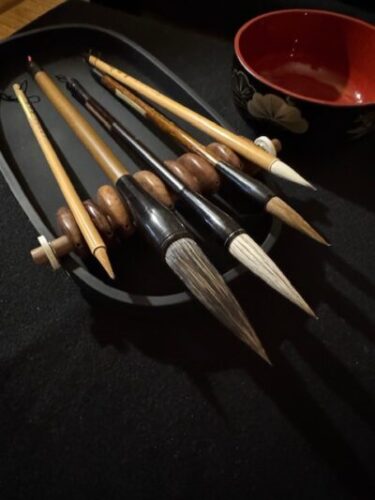
4 thoughts on “● Sakura and Shodo”
Can’t wait, hope you enjoy your new language, I know you will perfect it.
Thank you! 🌸
I’ll be interested to see what features you need/want in a calligraphy table.
Yes. I want it to be efficient and pretty too.
Comments are closed.